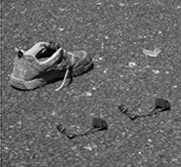Tampering Detection on Digital Evidence for Forensics Purposes
Main Article Content
Keywords
Watermarking, fragile watermarking, digital forensics, tampering detection, Collatz conjecture
Abstract
In terms of digital evidence, images of a crime scene play an important role in a legal process; therefore it is essential to guarantee their chain of custody. If the image is tampered with operations such as cropping, duplicity or blurring of objects, there must be a mechanism that identifies the existence of such manipulation. In this project, a solution to the chain of custody based on a technique known as watermarking is proposed. In order to validate the sensitivity and effectiveness of the proposed system, six classes of manipulations are applied to watermarked images; finding a high sensitivity to small manipulations (e.g 0.25% of the image size), since in all cases the manipulation was identified. With the proposed solution, legal authority can rely on the chain of custody of the digital evidence.
Downloads
References
[2] M. Cedillo Hernández, M. Nakano Miyatake, and H. Pérez Meana, “A robustwatermarking technique based on image normalization,”Revista Facultad deIngeniería Universidad de Antioquia, no. 52, pp. 147–160, 2010. 54
[3] L. F. Huallpa Vargas and L. P. Yapu Quispe, “Watermark resistente en eldominio de las frecuencias de imágenes digitales para su autenticación seguramediante autómatas celulares,”Revista Investigación & Desarrollo, vol. 1,no. 11, 2011. 54
[4] D. Renza, D. M. Ballesteros L, and H. D. Ortiz, “Text hiding in imagesbased on qim and ovsf,”IEEE Latin America Transactions, vol. 14, no. 3,pp. 1206–1212, 2016. 54
[5] A. Soria Lorente, R. A. Cumbrera González, and Y. Fonseca Reyna, “Al-goritmo esteganográfico de clave privada en el dominio de la transformadadiscreta del coseno,”Revista Cubana de Ciencias Informáticas, vol. 10, no. 2,pp. 116–131, 2016. 54
[6] X. Qi and X. Xin, “A singular-value-based semi-fragile watermarking schemefor image content authentication with tamper localization,”Journal of VisualCommunication and Image Representation, vol. 30, pp. 312–327, 2015. 55
[7] P. Singh and R. Chadha, “A survey of digital watermarking techniques, ap-plications and attacks,”International Journal of Engineering and InnovativeTechnology (IJEIT), vol. 2, no. 9, pp. 165–175, 2013. 55
[8] N. Boujemaa, E. Yousef, L. Rachid, B. M. Azizet al., “Fragile watermar-king of medical image for content authentication and security,”IJCSN-International Journal of Computer Science and Network, vol. 5, no. 5, 2016.55
[9] M. Botta, D. Cavagnino, and V. Pomponiu, “A successful attack and revisionof a chaotic system based fragile watermarking scheme for image tamperdetection,”AEU-International Journal of Electronics and Communications,vol. 69, no. 1, pp. 242–245, 2015. 55
[10] Y.-C. Fan and Y.-Y. Hsu, “Novel fragile watermarking scheme using an ar-tificial neural network for image authentication,”Applied Mathematics &Information Sciences, vol. 9, no. 5, p. 2681, 2015. 55
[11] S. Dadkhah, A. Abd Manaf, Y. Hori, A. Ella Hassanien, and S. Sadeghi, “Aneffective svd-based image tampering detection and self-recovery using activewatermarking,”Signal Processing: Image Communication, vol. 29, no. 10, pp.1197–1210, 2014. 55
[12] O. Benrhouma, H. Hermassi, and S. Belghith, “Security analysis and im-provement of an active watermarking system for image tampering detectionusing a self-recovery scheme,”Multimedia Tools and Applications, vol. 76,no. 20, pp. 21 133–21 156, 2017. 55
[13] X. Tong, Y. Liu, M. Zhang, and Y. Chen, “A novel chaos-based fragile water-marking for image tampering detection and self-recovery,”Signal Processing:Image Communication, vol. 28, no. 3, pp. 301–308, 2013. 55
[14] A. Joshy and N. Suresh, “A dual security approach for image watermarkingusing aes and dwt,”International Journal of Digital Application & Contem-porary research, vol. 3, no. 1, 2014. 55
[15] D. Renza, D. M. Ballesteros L, and C. Lemus, “Authenticity verificationof audio signals based on fragile watermarking for audio forensics,”ExpertSystems with Applications, vol. 91, pp. 211–222, 2018. 55
[16] D. Renza, C. Lemus, and D. M. Ballesteros L., “Audio authenticity andtampering detection based on information hiding and collatz p-bit code,”Journal of Information Hiding and Multimedia Signal Processing, vol. 8, pp.1294–1304, Nov. 2017. 55
[17] T. Tarver, “The collatz conjecture: Determining an infinite convergent se-quence,”Asian Journal of Mathematical Sciences (AJMS), vol. 1, no. 02, pp.102–104, 2017. 58
[18] V. Gupta and A. Barve, “A review on image watermarking and its techni-ques,”International Journal of Advanced Research in Computer Science andSoftware Engineering, vol. 4, no. 1, pp. 92–97, 2014. 63
[19] S. M. Mousavi, A. Naghsh, and S. Abu-Bakar, “Watermarking techniquesused in medical images: a survey,”Journal of digital imaging, vol. 27, no. 6,pp. 714–729, 2014. 63
[20] P. EDITOR, “Photoshop online en español (en linea),” 2017,http://photoshopen.blogspot.com/. 63
[21] A. Abbasi, C. S. Woo, R. W. Ibrahim, and S. Islam, “Invariant domain wa-termarking using heaviside function of order alpha and fractional gaussianfield,”PloS one, vol. 10, no. 4, p. e0123427, 2015. 66
[22] J. Zhou, W. Sun, L. Dong, X. Liu, O. C. Au, and Y. Y. Tang, “Securereversible image data hiding over encrypted domain via key modulation,”IEEE Transactions on Circuits and Systems for Video Technology, vol. 26,no. 3, pp. 441–452, 2016 67

